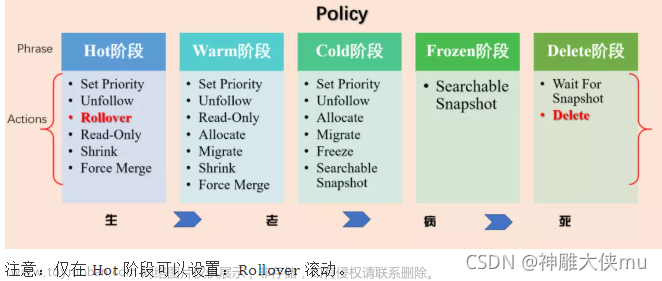文章汇总归纳整理于:算法竞赛学习之路[Java版]
Java快读快写模版
相应的数据的读入与输出方法,可以根据自己的需求进行相应的修改
使用StreamTokenizer读取数据时,要注意输入数据的空格(StreamTokenizer以空格或回车换行为每次输入的分隔)
读入与输出对象
// 读入对象
// 快速读入对象
StreamTokenizer st = new StreamTokenizer(new BufferedReader(new InputStreamReader(System.in)));
// 字符串快速读入对象
BufferedReader br = new BufferedReader(new InputStreamReader(System.in));
// 快速输出对象
PrintWriter out = new PrintWriter(new BufferedWriter(new OutputStreamWriter(System.out)));
读入整数
// 读入整数
public int readInt() {
try {
st.nextToken();
} catch (IOException e) {
e.printStackTrace();
}
return (int) st.nval;
}
读入长整型整数
// 读入长整型整数
public long readLong() {
try {
st.nextToken();
} catch (IOException e) {
e.printStackTrace();
}
return (long) st.nval;
}
读入浮点数
// 读入浮点数
public double readDouble() {
try {
st.nextToken();
} catch (IOException e) {
e.printStackTrace();
}
return st.nval;
}
读入字符串
public String readString() {
try {
st.nextToken();
} catch (IOException e) {
e.printStackTrace();
}
return st.sval;
}
注意:
1.如果读取的字符串中含有空格,则使用上述方法读取字符串,会存在读取问题,读到空格就停止本次的数据读入,因为StreamTokenizer在读取输入数据时,是以空格或回车换行为每次输入数据的分隔,所以如果要读取含有空格的字符串,要使用下面的方法
虽然StreamTokenizer有提供方法,可以修改输入数据时的分隔符,但是由于大部分题目的输入数据中都是以空格或换行为分隔符,所以不建议进行修改(如要修改可以参考:StreamTokenizer使用详解)
2.如果要将数值数据以字符串的形式读入,则不能使用上述的方法,需要使用下面的方法。StreamTokenizer以字符串的形式读取数值数据,读入后的字符串变量将指向null,即StreamTokenizer以字符串的形式读入数值数据读入的结果为空。
String s = readString();
out.print(s);
out.flush();

// 读入字符串
public String readString() {
String s = null;
try {
s = br.readLine();
} catch (IOException e) {
e.printStackTrace();
}
return s;
}
输出数据
out.print(); // 不换行输出
out.println(); // 换行输出
out.printf();//格式化输出
// 将缓冲区的数据刷新
// 只有将缓冲区的数据进行刷新,才会在控制台进行输出
out.flush(); // 一定要写否则数据不会真正输出
快读快写的使用
package 快读快写;
import java.io.*;
class ReadAndWrite {
// 读入对象
// 快速读入对象
StreamTokenizer st = new StreamTokenizer(new BufferedReader(new InputStreamReader(System.in)));
// 字符串快速读入对象
BufferedReader br = new BufferedReader(new InputStreamReader(System.in));
// 快速输出对象
PrintWriter out = new PrintWriter(new BufferedWriter(new OutputStreamWriter(System.out)));
// 读入整数
public int readInt() {
try {
st.nextToken();
} catch (IOException e) {
e.printStackTrace();
}
return (int) st.nval;
}
// 读入长整型整数
public long readLong() {
try {
st.nextToken();
} catch (IOException e) {
e.printStackTrace();
}
return (long) st.nval;
}
// 读入浮点数
public double readDouble() {
try {
st.nextToken();
} catch (IOException e) {
e.printStackTrace();
}
return st.nval;
}
// 读入字符串
public String readString1() {
String s = null;
try {
s = br.readLine();
} catch (IOException e) {
e.printStackTrace();
}
return s;
}
public String readString2() {
try {
st.nextToken();
} catch (IOException e) {
e.printStackTrace();
}
return st.sval;
}
public static void main(String[] args) {
ReadAndWrite readAndWrite = new ReadAndWrite();
// 读入整数
int i = readAndWrite.readInt();
readAndWrite.out.println(i);
// 将缓冲区的数据刷新
// 只有将缓冲区的数据进行刷新,才会在控制台进行输出
readAndWrite.out.flush(); // 一定要写否则数据不会真正输出
// 读入长整数
long l = readAndWrite.readLong();
readAndWrite.out.println(l);
// 读入浮点数
double d = readAndWrite.readDouble();
readAndWrite.out.println(d);
// 读入字符串
String s = readAndWrite.readString1();
readAndWrite.out.println(s);
s = readAndWrite.readString2();
readAndWrite.out.println(s);
readAndWrite.out.flush();
}
}

Java快读快写练习
P5715 【深基3.例8】三位数排序
传送门:https://www.luogu.com.cn/problem/P5715
解题代码
// package 快读快写;
import java.io.*;
public class Main {
// 读入对象
static StreamTokenizer in = new StreamTokenizer(new BufferedReader(new InputStreamReader(System.in)));
// 输出对象
static PrintWriter out = new PrintWriter(new BufferedWriter(new OutputStreamWriter(System.out)));
public static void main(String[] args) {
// 读入数据
int a = readInt();
int b = readInt();
int c = readInt();
// 将 a b c 三个数从小到大进行排序
// 如果 a 大于 b 则交换 a b
if ( a > b ) {
int t = a;
a = b;
b = t;
}
// 如果 a 大于 c 则交换 a c
if ( a > c ) {
int t = a;
a = c;
c = t;
}
// 经过上两次交换 a 变为最小
// 如果 b 大于 c 则交换 b c
// 交换之后 c 变为最大
if ( b > c ) {
int t = b;
b = c;
c = t;
}
// 输出
out.print(a + " ");
out.print(b + " ");
out.print(c);
out.flush();
}
/**
* 读入整数
* @return 返回读入的整数数值
*/
static int readInt() {
try {
in.nextToken();
} catch (IOException e) {
e.printStackTrace();
}
return (int) in.nval;
}
}
P4414 [COCI2006-2007#2] ABC
传送门:https://www.luogu.com.cn/problem/P4414
解题代码
// package 快读快写;
import java.io.*;
public class Main {
// 数据读入对象
static StreamTokenizer st = new StreamTokenizer(new BufferedReader(new InputStreamReader(System.in)));
// 输出对象
static PrintWriter out = new PrintWriter(new BufferedWriter(new OutputStreamWriter(System.out)));
public static void main(String[] args) throws IOException {
// 数据读入
int a = readInt();
int b = readInt();
int c = readInt();
// 对三个数从小到大进行排序
if (a > b) {
int t = a;
a = b;
b = t;
}
if (a > c) {
int t = a;
a = c;
c = t;
}
if (b > c) {
int t = b;
b = c;
c = t;
}
// 此时 a b c 已经按照从小到大的顺序排列
// 读取字符串
String s = readString();
int len = s.length();
// 输出的顺序按照输入的字符串中ABC三个字母的顺序输出abc,
// ABC三个对应的数据要满足 A<B<C
for (int i = 0; i < len; i++) {
char ch = s.charAt(i);
switch (ch) {
case 'A':
out.print(a);
break;
case 'B':
out.print(b);
break;
case 'C':
out.print(c);
break;
}
out.print(" ");
}
out.flush();
}
/**
* 读入整数
* @return 整数
*/
static int readInt() {
try {
st.nextToken();
} catch (IOException e) {
e.printStackTrace();
}
return (int) st.nval;
}
/**
* 读入字符串(输入的字符串中不能含有空格)
* @return 字符串
*/
static String readString() {
try {
st.nextToken();
} catch (IOException e) {
e.printStackTrace();
}
return st.sval;
}
}
P4325 [COCI2006-2007#1] Modulo
传送门:https://www.luogu.com.cn/problem/P4325
解题代码
// package 快读快写;
import java.io.*;
public class Main {
// 快读对象
static StreamTokenizer in = new StreamTokenizer(new BufferedReader(new InputStreamReader(System.in)));
// 快写对象
static PrintWriter out = new PrintWriter(new BufferedWriter(new OutputStreamWriter(System.out)));
public static void main(String[] args) {
// 读入数据
// 由题目已知输入10个整数
// 由于要统计输入的10个整数模42后有多少个不同的余数
// 模42,余数最多有42种可能 0-42
// 这里使用一个数组来统计每种可能余数出现的次数
int[] remain = new int[42];
for (int i = 0; i < 10; i++) {
int num = readInt();
remain[num % 42]++; // 计算num%42余数,并对该余数出现的次数加一
}
// 遍历查看有多少个不同的余数
int ans = 0;
for (int i = 0; i < 42; i++) {
if (remain[i] > 0) ans++;
}
out.print(ans);
out.flush();
}
/**
* 读入整数
*
* @return 整数
*/
static int readInt() {
try {
in.nextToken();
} catch (IOException e) {
e.printStackTrace();
}
return (int) in.nval;
}
}
P8711 [蓝桥杯 2020 省 B1] 整除序列
传送门:https://www.luogu.com.cn/problem/P8711
解题代码
// package 快读快写;
import java.io.*;
public class Main {
// 快读对象
static StreamTokenizer in = new StreamTokenizer(new BufferedReader(new InputStreamReader(System.in)));
// 快写对象
static PrintWriter out = new PrintWriter(new BufferedWriter(new OutputStreamWriter(System.out)));
public static void main(String[] args) {
// 读取数据
long num = readLong();
// 如果当前整数还大于0就进行除以2
while ( num > 0 ) {
out.print(num + " ");
num /= 2;
}
out.flush();
}
/**
* 读取长整型整数
*
* @return 长整型整数
*/
static long readLong() {
try {
in.nextToken();
} catch (IOException e) {
e.printStackTrace();
}
return (long) in.nval;
}
}
存在整数的精度问题,最后一个测试点的精度超过long所允许的最大值,需要使用Java中的大数文章来源:https://www.toymoban.com/news/detail-406975.html
 文章来源地址https://www.toymoban.com/news/detail-406975.html
文章来源地址https://www.toymoban.com/news/detail-406975.html
// package 快读快写;
import java.io.*;
import java.math.BigInteger;
public class Main {
// 快读对象
static BufferedReader in = new BufferedReader(new InputStreamReader(System.in));
// 快写对象
static PrintWriter out = new PrintWriter(new BufferedWriter(new OutputStreamWriter(System.out)));
public static void main(String[] args) {
// 读取数据
String s = readString();
// 使用大数(10^18次方 long的精度不够)
BigInteger bigInteger = new BigInteger(s);
// 如果当前整数还大于0就进行除以2
// bigInteger.compareTo(BigInteger.ZERO) 和0比较,
// 大于0返回正数,等于0返回0,小于0返回负数
while ( bigInteger.compareTo(BigInteger.ZERO)>0 ) {
out.print(bigInteger + " "); // 输出当前整数
bigInteger = bigInteger.divide(BigInteger.valueOf(2)); // 除以2
}
out.flush();
}
/**
* 读取字符串
*
* @return 字符串
*/
static String readString() {
String s = null;
try {
s = in.readLine();
} catch (IOException e) {
e.printStackTrace();
}
return s;
}
}
P1152 欢乐的跳
解题代码
// package 快读快写;
import java.io.*;
public class Main {
// 快读对象
static StreamTokenizer in = new StreamTokenizer(new BufferedReader(new InputStreamReader(System.in)));
// 快写对象
static PrintWriter out = new PrintWriter(new BufferedWriter(new OutputStreamWriter(System.out)));
public static void main(String[] args) {
int n = readInt();
// 一个 n 个元素的整数数组,如果数组两个连续元素之间差的绝对值包括了
// [1,n−1] 之间的所有整数,则称之符合“欢乐的跳”
// 采用一个数组来记录 [1,n−1] 之间的所有整数出现的次数
int[] divide = new int[n];
// num1 num2为数组中相邻的两个数
int num1 = 0; // 记录前一个整数
int num2 = 0; // 记录后一个整数
for (int i = 0; i < n; i++) {
if (i == 0) { // 第一次读入
num1 = readInt();
continue;
}
num2 = readInt(); // 读入当前数
int d = Math.abs(num2 - num1); // 计算相邻两个数之间差的绝对值
// 防止下标越界,由于不记录差为0出现的次数,所以将差不在[1,n−1]内,令差为0
d = d > 0 && d < n ? d : 0;
divide[d]++; // 计算相邻两个数之间的差,并记录该差出现的次数
num1 = num2; // 计算完成后,对于下一次输入,num2为前一个数
}
boolean flag = true; // 初始为 欢乐的跳
for (int i = 1; i < n; i++) {
// 如果 [1,n−1] 之间的所有整数,由整数未出现,则不为 欢乐的跳
if (divide[i] == 0) {
flag = false;
break;
}
}
// 为 欢乐的跳 输出 Jolly
// 否则输出 Not jolly
out.print(flag ? "Jolly" : "Not jolly");
out.flush();
}
/**
* 读入整数
*
* @return 整数
*/
static int readInt() {
try {
in.nextToken();
} catch (IOException e) {
e.printStackTrace();
}
return (int) in.nval;
}
}
到了这里,关于Java快读快写的文章就介绍完了。如果您还想了解更多内容,请在右上角搜索TOY模板网以前的文章或继续浏览下面的相关文章,希望大家以后多多支持TOY模板网!











